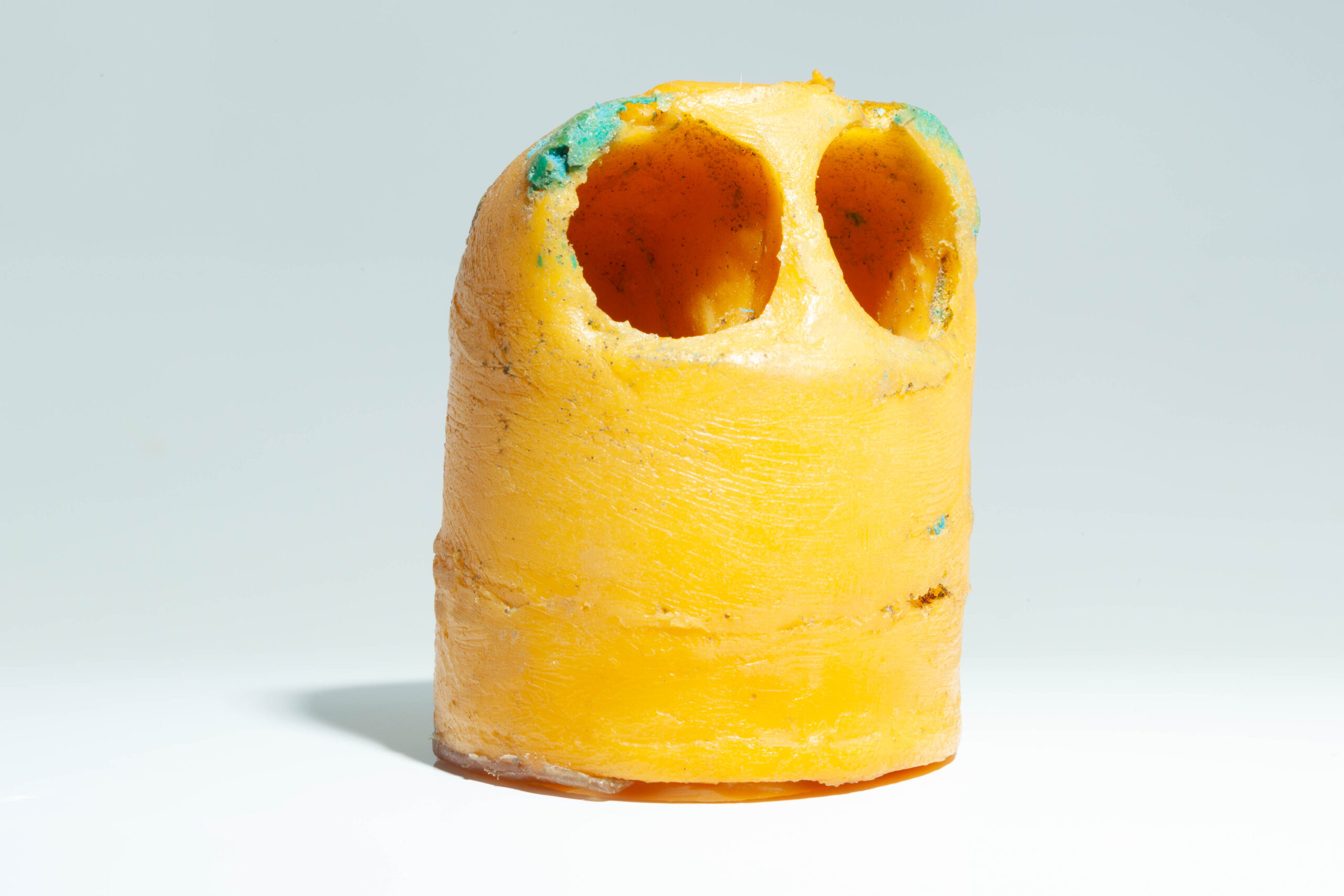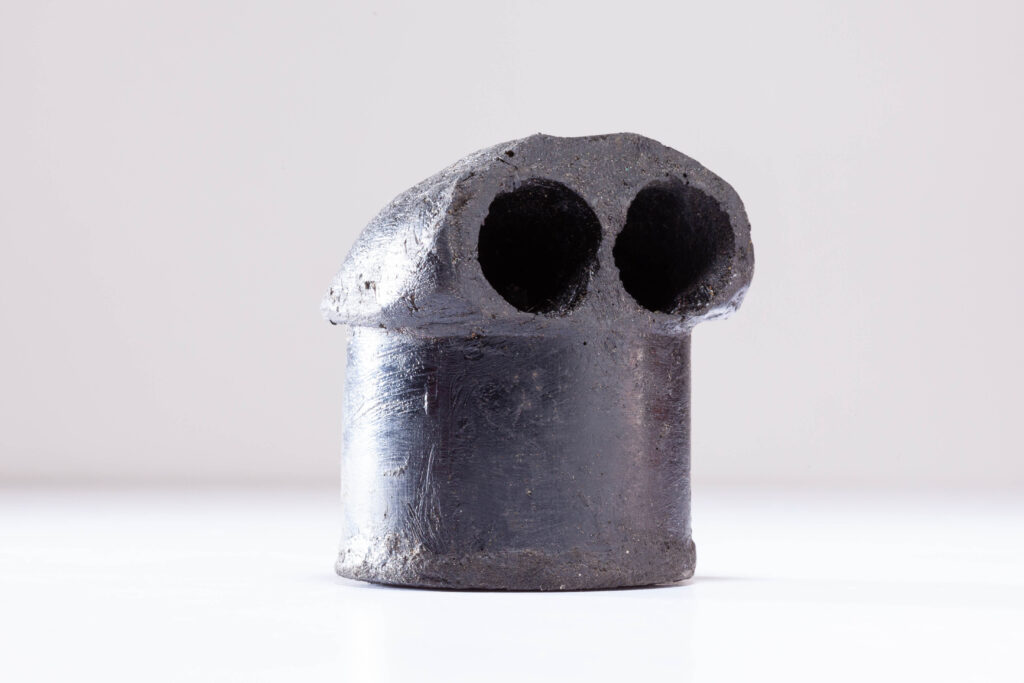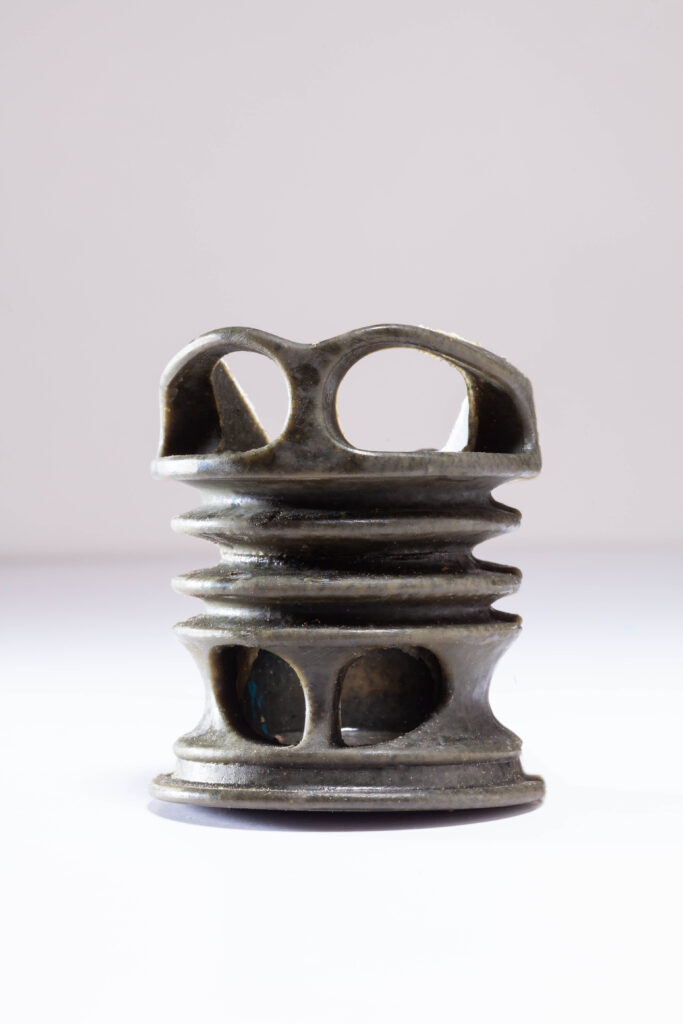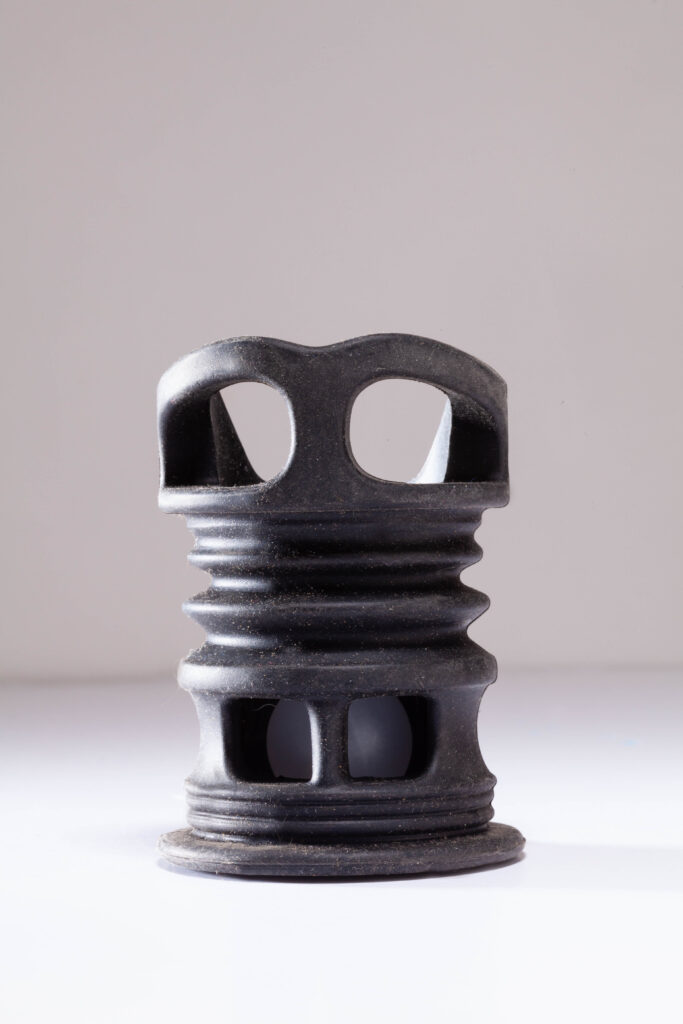By Jim Marsh
Swell Watercraft set out to build a faster, more comfortable sit on top kayak. The big idea was to lower the footwells all the way, just like a sea kayak. The added performance would be a game changer. But what to do with the excess water that filled into the cockpit? We had a number of ideas, but our patented Scupper valve was the avenue we ended up taking. It utilizes a 1″ ball that keeps water from coming in, but drains the cockpit through the scupper hole when you paddle fast. This is our journey building our revolutionary valve.

#1 We built this rudimentary yellow valve out of urethane as a test of concept. We were pleased it drained, but it also leaked, making it hard to measure. Still, we decided to build another one even though we weren’t sure this would be our solution.

#2 We added a rim underneath the kayak that keep water from rushing in. Bingo! We likey. It works well. Let’s make a polished prototype!

#3 We decided to allow the Scupper Valve to push down so you can turn it off and on. This allows one to not have drag under the kayak, especially nice when launching and landing. The orange cord was for pulling it upward. The metal bar was for pushing downward. It was also determined it wasn’t draining as fast as we wanted so we immediately made another one (both are in the photo)that was 25% larger to flush water faster. We’ll just make our Scupper hole larger on the kayak to compensate. Ultimately, we wanted more drainage so we made major changes to get there.

#4 Enter our masterpiece. Destined for greatness, this valve answered all our questions and solved all our problems. Perfect seal, great drainage, easy to operate. There was only one problem, when pushing the valve down occasionally the circular hole would distort and leak water. This took the air out of our balloon, but we knew we could fix the issue. So back to the drawing board.

#5 We added height, allowing the ball to move more freely. We thickened up the handle. We altered the shape of the drainage holes. We figured out a much better lip at the bottom, which creates the seal. Easy to operate, easy to drain, indestructible. We had finally achieved the level of performance we had envisioned in the first place!
Conclusion: It was Tim Niemier’s dream to lower the footwells to make the world’s most comfortable performance sit on top. In order to achieve this we had to take a journey of discovery to find our solution that would make this happen. This was more of a deep dive versus a quick dip. Thankfully Tim, Adam Bierschenk and myself had the time and energy to continue building and testing these prototypes.
Each step had value. The failure of #4 hurt our feelings, but it was very important to get us the level of performance we eventually got. We even had an injection molder alter our valves’ interior without our consent or knowledge. Unraveling that mystery, as irritating as it was, had immense value! We were able to understand the interior dynamics by comparing their version with ours and accentuate features that were obviously working. In the end, our own mistakes became our greatest teachers.
For More Info on the Swell Watercraft Scupper Valve, check out this video:
